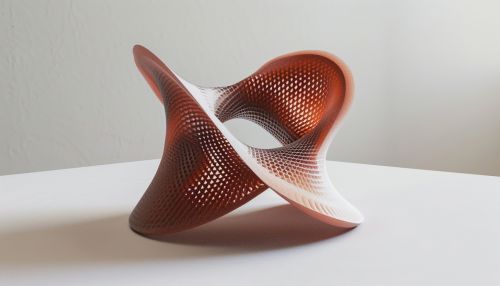Hyperbolic Cylinder
Definition
A hyperbolic cylinder is a type of quadric surface which is a higher-dimensional analogue of a hyperbola. It is defined as the set of all points (x, y, z) in three-dimensional space that satisfy a certain equation. This equation is of the form Ax^2 + By^2 - Cz^2 = 1, where A, B, and C are constants and at least one of A, B, and C is negative.


Properties
Hyperbolic cylinders have several distinctive properties that set them apart from other types of quadric surfaces.
Shape
The shape of a hyperbolic cylinder is often described as a "saddle", due to its concave and convex curvature. This curvature is a direct result of the negative term in the defining equation of the hyperbolic cylinder.
Asymptotes
Like hyperbolas, hyperbolic cylinders have two asymptotes. These are the lines that the surface of the hyperbolic cylinder approaches but never reaches.
Symmetry
Hyperbolic cylinders exhibit a type of symmetry known as hyperbolic symmetry. This means that the surface can be divided into two identical halves along a plane.
Applications
Hyperbolic cylinders have a number of applications in various fields of study.
Mathematics
In mathematics, hyperbolic cylinders are often used in the study of differential geometry and non-Euclidean geometry. They serve as examples of surfaces with negative Gaussian curvature, and their properties are often contrasted with those of elliptic cylinders and parabolic cylinders, which have positive and zero Gaussian curvature, respectively.
Physics
In physics, hyperbolic cylinders are used in the study of electromagnetism and quantum mechanics. For example, the electric field around a point charge can be represented as a hyperbolic cylinder in certain coordinate systems.
Engineering
In engineering, hyperbolic cylinders are used in the design of certain types of structures, such as hyperboloid cooling towers in power plants. The shape of these towers is a hyperbolic cylinder, which provides structural stability and efficient cooling.
